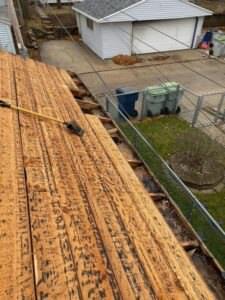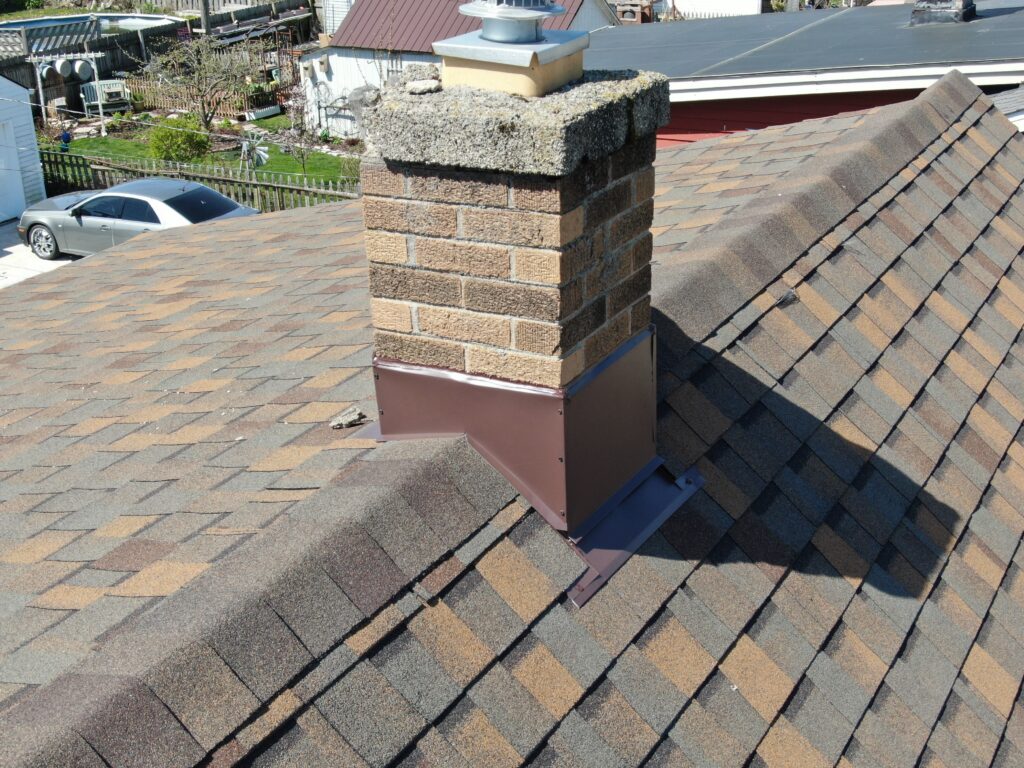How Many Layers of Asphalt Shingles Can be on a Roof?
Hearing that you need a new roof or want a curb appeal update can be frustrating when you are on a tight budget. That’s why nailing another layer of shingles over the existing layer can seem appealing.
If you’ve been searching for budget-friendly options to update your home, you might have found that you can nail over old asphalt shingles instead of replacing them.
However, you may not know that this isn’t an ideal option for most homeowners for many reasons.
One of the glaring issues with a layover is how many layers have already been nailed to the roof. Which leads us to how many layers of asphalt shingles are too many?
Having an old or damaged roof that needs repair can be stressful. At Rescue My Roof, we know you want to have a roof that will keep your family safe and secure for a lifetime. That’s why we install high-quality roofs for thousands of homeowners in the greater Milwaukee area.
We have spent over a decade in the roofing industry, educating homeowners to make the best decisions for their homes. That’s why we’ll be breaking down how many layers of asphalt shingles can be on your roof.
In this article, we’ll give you a breakdown of how many layers can safely be on your roof. In the end, you will know what steps to take next when it comes to a layover or a roof replacement.
How Many Layers of Shingles Can Be on a Roof?

There are a few things to be aware of before we get started.
First, layers and layers of shingles are not just frowned upon for aesthetic reasons. There are safety regulations that need to be followed.
In many states, you’re only allowed to have two layers of shingles on a roof due to fire codes. But that doesn’t mean you won’t see older roofs with three to four layers.
If your roof has two or more layers, you will need a total replacement.
However, if you’re on a budget and your current roof is only one layer, a layover is a great option.
The next thing you need to know is that your asphalt roof needs to be in a specific condition for a layover to be installed.
The shingles will need to be laid down flat to ensure the proper installation of additional shingles. So if your existing roof has any lifting or cracked shingles, you may be better off with a total roof replacement.
Want to know which option is best for you? It’s best to call in the roofing experts. Only their expertise will be able to determine what can be done to your roof safely.
Four Things You Need to Know About a Roof Layover
We’ve established the basics, and now you know that only two layers of asphalt shingles are safe.
If you find that your roof is indeed eligible or a layover, here’s what you need to know before jumping into the project.
1. You Can’t Inspect Roof Decking

Roof decking is the base layer of your entire roof. It is typically made of plywood sheets and supports all of the other roofing materials laid on top.
However, when your roof is older, it is at a higher risk of leaks that can cause the decking to rot.
The decking cannot be inspected when you get a layover instead of a total roof replacement.
If there is an issue with the decking, like rotten wood, it will not be uncovered during the layover process and may continue to wreak havoc until a roof replacement is necessary.
If your roof is between 18 – 25 years old? It may be a better idea to opt for a roof replacement so that any issues with decking will be found, and your roof will provide the ultimate protection for your home.
2. Roof Layovers Don’t Include New Flashings

Roof flashing is essential for ensuring water cannot enter your home. Flashing is a metal sheet that is placed around any penetrations in the roof like vents or chimneys and makes the edges of the penetrations waterproof.
The old flashings cannot be replaced because none of the old roofing materials are being torn off during a roof layover.
If the flashings are already beginning to leak or were installed poorly the first time, they will continue to cause leaks and water damage.
It may be ideal for getting a total roof replacement to save money on repairs in the long run. The sales representative should inspect the flashings to determine their condition when you get an estimate.
3. You Cannot Switch Shingle Types During a Roof Layover
Are you sick of your 3-Tab shingle roof? If you are, a layover isn’t the best option.
If you want to upgrade your roof to a dimensional or luxury asphalt shingle, the difference in shingle textures can create a lumpy roof.
If you have a 3-tab asphalt shingle roof and are on a tight budget, the best option is to stick to using 3-tab shingles again in the layover. Otherwise, a roof replacement may be the way to go.
4. You Won’t Get the Best Warranty
If you upgrade your shingles during a layover, a lumpy roof won’t be the last issue you encounter. You also will not get the best warranty. Most manufacturers may provide a shingle only warranty for 10 to 15 years, not including labor or waste.
All shingles come with a material warranty from the manufacturer. However, the type and quality of the warranty vary from material to material.
You get the best manufacturer’s warranty when you use all of the ideal materials for your shingle type (typically 50 years). The warranty is null when you use materials outside of their requirements, like an upgraded shingle.
Is a Roof Layover the Best Option For You?
Now you know the top four most important things to know before nailing over those old shingles. If your roof isn’t a good fit for this project, your other option is a total roof replacement.
If your roof shingles are flat, you don’t want to upgrade shingles, and you’re okay with the potential of decking and flashing issues, a layover may be for you.
Don’t nail over any shingles right away – you’ll want to contact a professional first to inspect your roof. This way, you can avoid any flashing and decking problems before the project begins.
The world of roofing can be confusing. Are you still unsure of which roofing project is right for you? You can learn more with “Roof Replacement vs. A Repair: Which One Do I Need?”
If you’re ready to take the plunge and get a roof layover (or a replacement) in the greater Milwaukee area, you can contact Rescue My Roof to schedule your free roof estimate.


